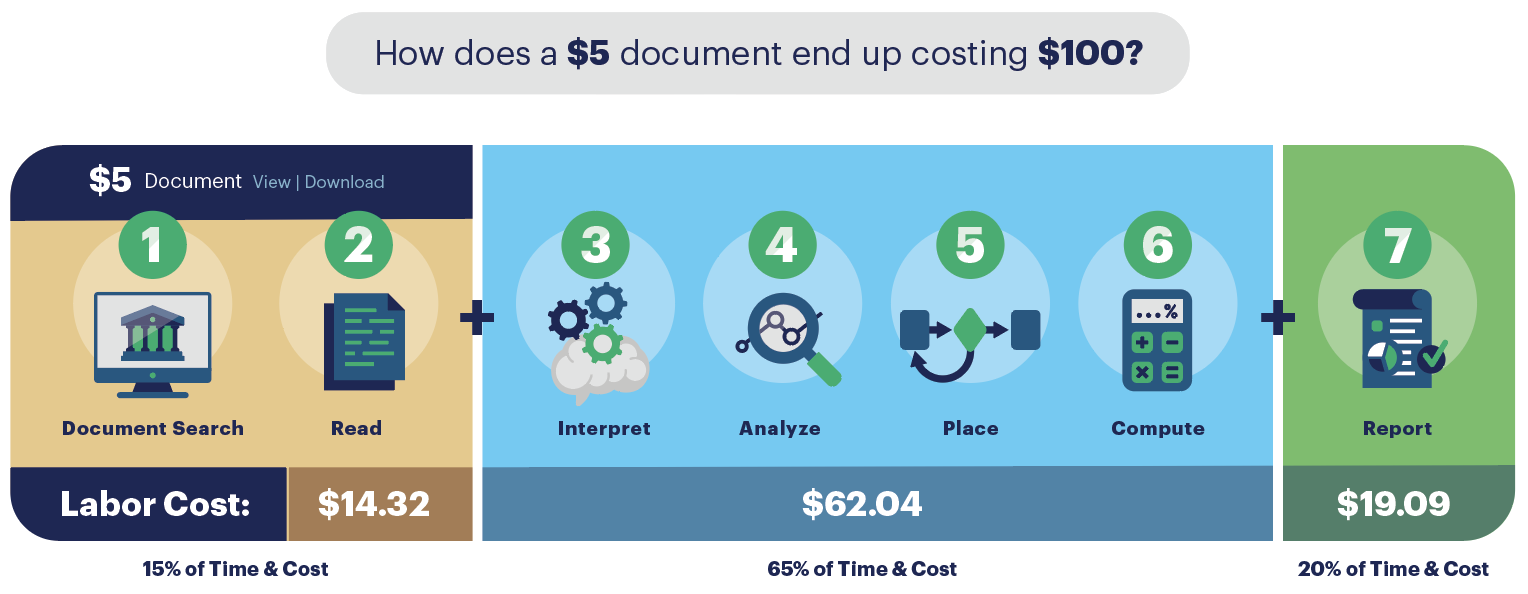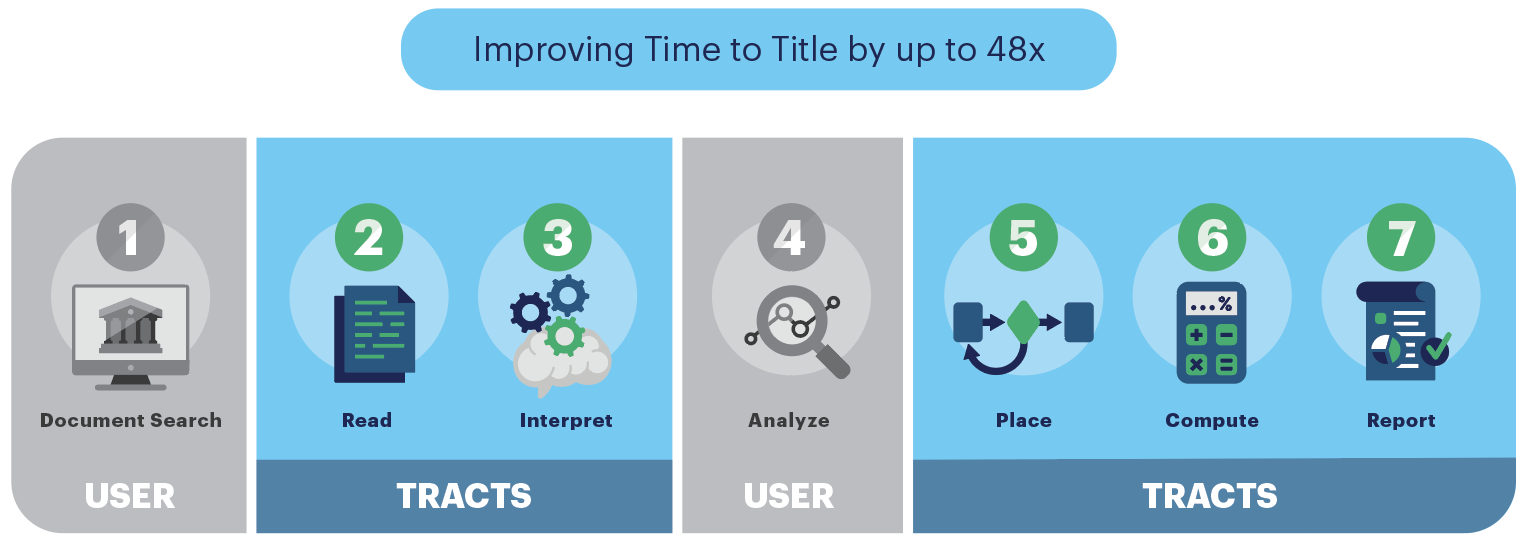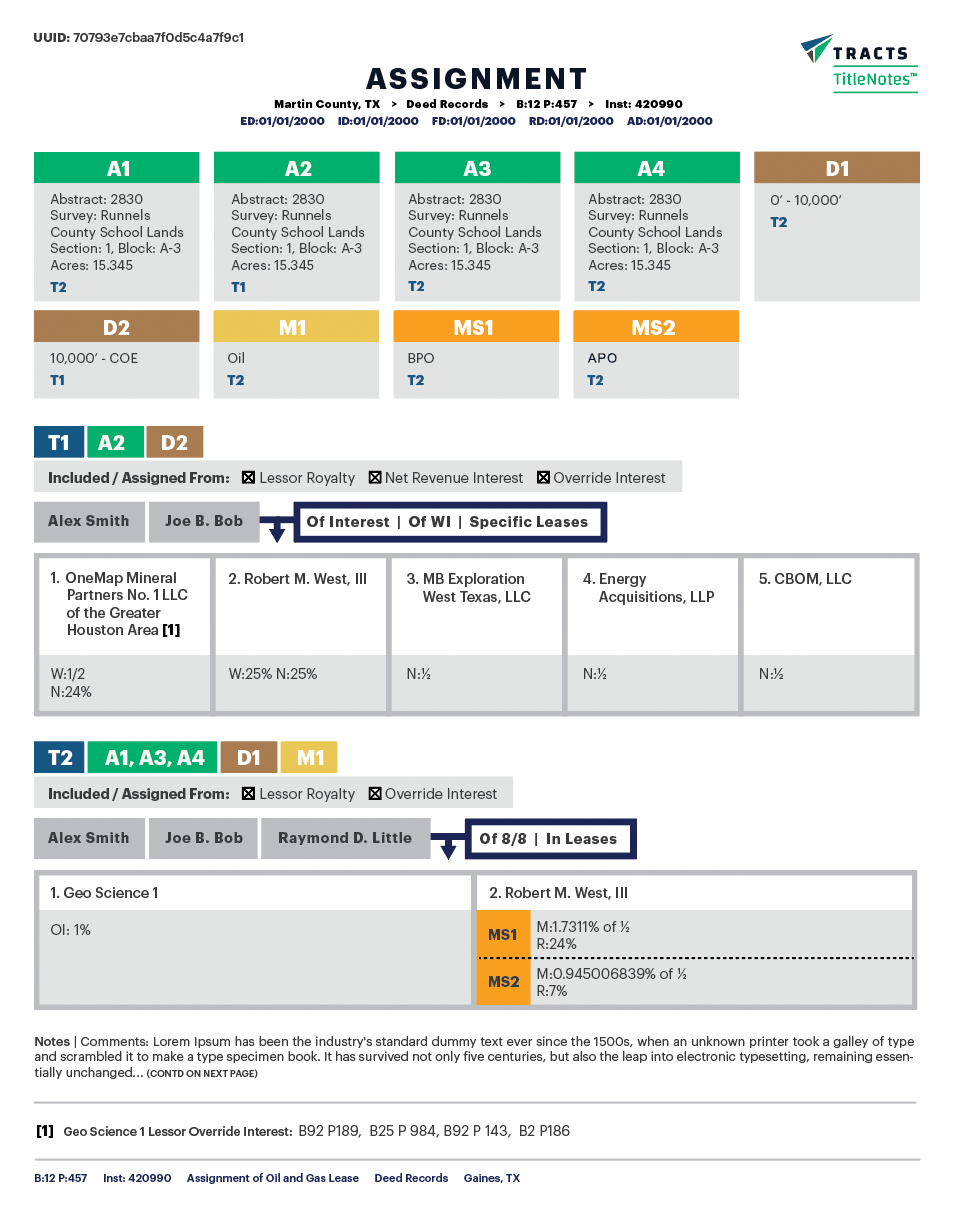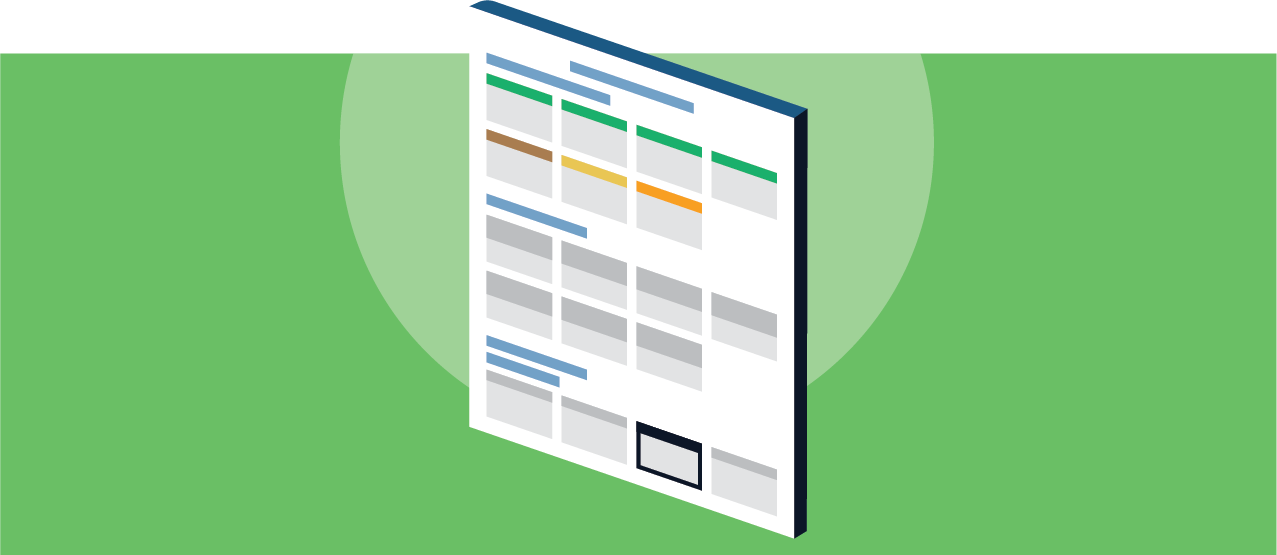Cleaning Up the Title Data We Use
Our goal is to make mineral rights ownership research as easy as a search bar. We started building Tracts to eliminate the math from title, and we have accomplished that goal. The platform automatically calculates ownership interest, generates title reports, and reimagines the visualization of title chains.
Our clients are running their title exponentially more efficiently, but a significant problem remains. The raw courthouse data is wordy, complex, disorganized, and lacks a standardized format.
As a result, landmen must sift through piles of documents to extract the 2%-3% of information that matters before making and recording their interpretation. Even with all the automation now possible, gathering and inputting the source data presents a painful bottleneck.
Until now.
We analyzed a sample of 500 courthouse documents to answer a question – How much of the content do we need for practical use? We found that out of an average of 1742 words per document, only around 40 are meaningful to determining ownership. While legal documents must be meticulously specific, we can summarize their intent in a few sentences.
Introducing the CliffNotes of Legal Documents
We have launched TitleNotes to simplify the source data. TitleNotes are CliffsNotes for real property rights – expert document interpretations trimmed to around 40 words and delivered as machine-readable PDFs for seamless upload into the Tracts platform. You have actionable ownership data after a light clean-up of aliases and tract matching.
Let’s dig into how this creates a monumental shift in understanding land ownership rights in oil and gas.

With the emergence of the Tracts Platform, you already know that the above timeline is out of date – you no longer need to order documents, calculate interest, and build custom reports.

But let’s focus on that first step – gathering and interpreting documents.
Digital courthouses like the ones provided by Enverus and various other data aggregators allow users to batch and download raw images of courthouse deeds. While an improvement, records lack a consistent standard. Some documents were handwritten, some used a typewriter, and others recorded digitally, all in different counties with unique historical processes and standards. As a result, landmen manually read and interpret each time a company or individual needs to understand ownership.
Different companies and individuals rereading and recording the same findings is redundant. With TitleNotes, eliminate unnecessary reading, interpreting, and transcribing with deeds distilled down to this:

Why TitleNotes?
In partnership with digital courthouses, Tracts is proud to offer TitleNotes. Offered as a service, clients can now order Interpretations along with the PDF from their data provider.
We designed the interpretation process to give our clients an initial analysis of the document, allowing for a quick decision on “if” and “how” a record might apply to their subject lands. It is time-consuming and costly to find the pertinent documents and understand the impact on your subject lands when chaining title. Utilizing TitleNotes cuts a majority of the tedious work involved in chaining title.
TitleNotes can optionally be pushed through Tracts’ computation engine to generate additional insights and reports.
When To Use TitleNotes
Utilizing TitleNotes will allow your team to focus on more difficult analysis tasks and save them significant time processing chains of title. At least two landmen have analyzed TitleNotes before a client receives them to improve clarity, accuracy, and ambiguity.
Your team will utilize TitleNotes whenever it needs to quickly understand any new conveyances, assignments, or leases that affect the subject land (area of interest/tract). TitleNotes will save you time, whether you’re running title for new mineral or lease acquisitions or supplementing runsheets and title opinions.
What data does a TitleNote cover?
A TitleNote summarizes the data points that represent a document’s influence on one or more subject lands. What is extracted by Tracts may change from document to document but in general covers recording information and the following data points:
CONVEYANCE
- Described Lands
- Depth Restrictions
- Relevant Dates
- Grantor(s)
- Grantee(s)
- Conveyed Interest
- Reservation(s)
- Document Type
- Transactions
- Referenced Documents
LEASE
- Described Lands
- Depth Restrictions
- Relevant Dates
- Lessor(s)
- Lessee(s)
- Lease Royalty Rate
- Term | Extension
- OGL | Memo OGL
- Fee | Fed | State | Tribal
- Paid-Up | Delay Rental
- Select Lease Terms
ASSIGNMENT
- Described Lands
- Depth Restrictions
- Relevant dates
- Assignor(s)
- Assignee(s)
- Assigned Interest
- Reserved Interest
- Proportionate Reduction
- Milestones
We spent the last five years fixing the way title is run. We spent the last year working on simplifying the data you use to do it. The day has arrived and in partnership with Enverus we’re excited to unleash TitleNotes into the wild.
To activate TitleNotes and receive a special introductory offer reach out to us or your Enverus representative starting today.
